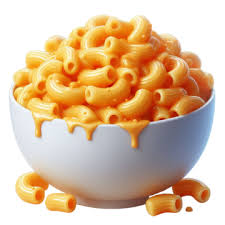

Pasta Perfection: Mastering Italy’s Signature Dishes



Pasta originated in Italy, a nation where food is an art form rather than merely a meal. Among the wide variety of pasta dishes, Alfredo's Pasta, Italian Carbonara, and Italian Macaroni are notable examples of the nation's rich culinary legacy. These well-known meals showcase the artistry of Italian cooking in addition to providing a sample of the country's many flavors. Let's examine these three works of art and learn how to make pasta like never before in your own home.
Italian Carbonara: A Classic with Simplicity
One of the most well-known pasta meals is Italian carbonara, which is adored all over the world for its rich flavor and creamy texture. Eggs, Pecorino Romano cheese, guanciale (an Italian cured meat produced from hog cheek), and black pepper are the four basic ingredients of carbonara, which has its origins in Rome. The method takes this dish to the next level, but the ingredients' simplicity makes it genuinely amazing.
Avoiding the use of cream, which has become a widespread mistake outside of Italy, is crucial to perfecting the art of Italian carbonara. The emulsion of heated pasta water and eggs, which forms a smooth sauce when combined with the cheese, gives carbonara its creamy texture. Toss with the crispy guanciale after cooking the pasta (usually rigatoni or spaghetti) in salted water. After draining the pasta, whisk the eggs and cheese together and quickly mix everything together, making sure the pasta's heat cooks the eggs just enough to create the sauce. The finishing touch is a dash of freshly ground black pepper. If you can master this method, every meal will give you a sense of Roman culinary history.
Italian Macaroni: A Versatile Delight
Although macaroni is frequently linked to American-style pasta meals like mac & cheese, "maccheroni" refers to a somewhat different but no less popular noodle variety in Italy. Maccheroni, also known as Italian macaroni, are usually short, tubular pasta shapes that are ideal for retaining sauces. Maccheroni is a flexible mainstay in Italian kitchens, appearing in a wide range of regional dishes from Sicily to Naples.
The sauce is essential to making a true Italian macaroni meal. Maccheroni can take on a variety of flavors, from Bologna's hearty pork ragu to Naples's delicate tomato-basil sauce. Add tomatoes, a dash of red pepper flakes, and fresh basil after sautéing the garlic and onion in olive oil for a genuinely Italian twist. After the sauce has thickened, add the cooked macaroni and garnish with a large amount of Pecorino Romano or Parmesan cheese. In order to produce a well-balanced and filling dinner that accentuates the flavors of basic, fresh ingredients, the sauce should stick to the pasta.
Alfredo’s Pasta: A Creamy, Dreamy Dish
Alfredo's Pasta is frequently regarded as an American take on Italian food, even if the name may have been inspired by the well-known Roman eatery. Although it might not be as thick or creamy as the American version, the dish has deep roots in Italy, where a similar concept exists. Fettuccine or other flat pasta forms are coated with a smooth, slightly buttery Alfredo sauce, which is traditionally made in Italy using only butter and Parmesan cheese.
The quality of the ingredients is the key to mastering Alfredo's Pasta. Make sure the pasta is cooked al dente and use Parmigiano Reggiano and fresh, high-quality butter. When the pasta is finished, add it to the pan with the cheese and melted butter. Toss in a little pasta water to help the sauce thicken. The richness of the flavors can be enhanced by adding a dash of nutmeg to the sauce for an Italian touch. The Italian version of Alfredo's Pasta is a lighter, yet no less wonderful, way to savor this creamy meal than the more decadent American version.
Understanding the harmony of flavors and honoring the customs of each dish are the first steps towards becoming an expert cook of Italian pasta. Each of these iconic meals delivers a distinct taste of Italy's culinary prowess, whether you're enjoying the velvety smoothness of Alfredo's Pasta with fresh mozarella, the adaptability of Italian macaroni, or the creamy richness of Italian Carbonara. Put on your apron and get to work making pasta; every plate will be beautiful.
